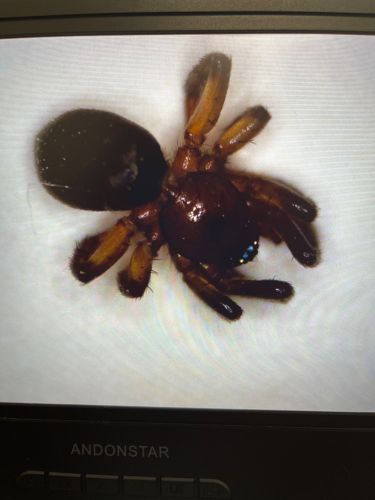Trapdoor spider
Scientific Name: Ctenizidae (family)
Order & Family: Araneae, Ctenizidae
Size: Typically 1.5 to 3 cm (0.6 to 1.2 inches) in body length, but some species can be larger.

Natural Habitat
Found in burrows in the ground, often with a hinged 'trapdoor' made of soil, silk, and vegetation. They prefer undisturbed soil in gardens, forests, and grassy areas.
Diet & Feeding
Predatory, ambush hunters. They feed on insects, small spiders, and other invertebrates that wander close to their burrows.
Behavior Patterns
Nocturnal hunters. They construct and reside in burrows topped with a camouflaged trapdoor. When prey is detected by vibrations, they rapidly open the trapdoor, lunge out, capture the prey, and retreat back into their burrow. They are generally solitary.
Risks & Benefits
Risks: While generally not aggressive, trapdoor spiders can bite if provoked or threatened. Their venom is typically not considered dangerous to humans, usually causing localized pain, swelling, and redness. Benefits: They help control populations of various insects and other invertebrates in their ecosystem.
Identified on: 11/12/2025